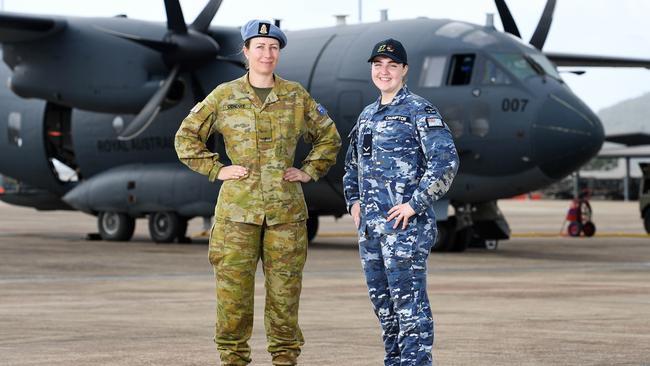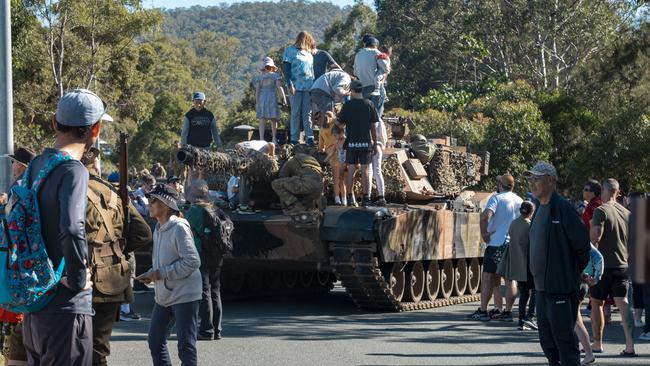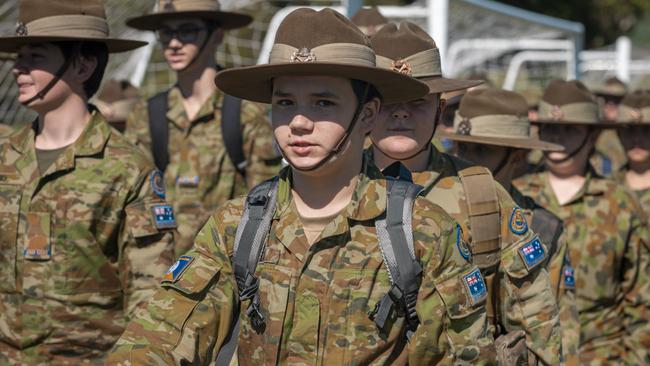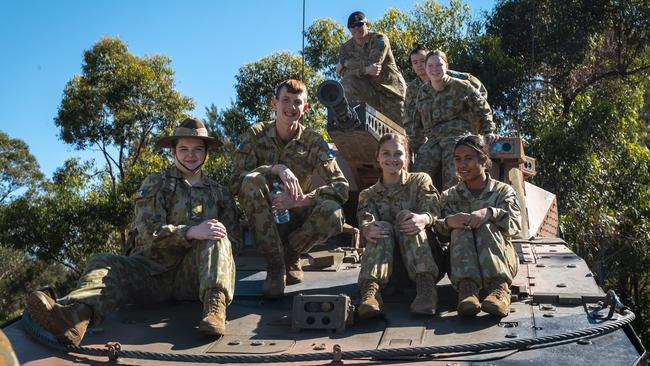ADF figures show Queenslanders make up one third of all recruits, as national total paints dire picture
Queenslanders are contributing more than a third of new ADF recruits nationally, but new figures show an overall dire recruitment picture with an intake of just 200 people out of an average 1000 new personnel needed a year.
National
Don't miss out on the headlines from National. Followed categories will be added to My News.
Queenslanders are contributing more than a third of new ADF recruits nationally, with school visits and open days cited for the patriotic drive making the state the defence capital of Australia.
But new figures show an overall dire recruitment picture with an average 1000 new personnel needed a year to meet AUKUS capability targets but an intake of just 200 people.
And there are warnings it could get worse as a new outsourced human resources provider transitions to take over the recruitment program for the ADF, under a Budget allocated $1bn for the “modernisation” of the rank and file.
The move has already led to the time it takes to recruit a single individual to extend beyond one year and demands for Defence to sign up as many in 2024-25 as it did in the 10 years leading up to 2022.

Queensland’s emergence as a national service state began around the time of Covid-19 with recruitment centres in Brisbane, Gold Coast, Maroochydore and Toowoomba noting a spike in sign-ups to this year reach 28 per cent of national recruitment.
Other centres in Townsville and Cairns also rose and now account for 8 per cent of national figures, with Defence noting that sons and daughters were following mothers and fathers into service.
Queensland now accounts for up to 36 per cent of ADF’s new recruits, despite its population base being smaller than NSW and Victoria, which in comparison saw drops in recruitment and retention rates and South Australia, which wants to be recognised as the premier defence state.
Part of the reason has been the number of defence bases and grassroots community campaigns.

According to the figures, NSW has slipped to 27 per cent and Victoria 16 per cent with the other states make up the remaining 21 per cent.
Defence Personnel Minister Matt Keogh said critically Queensland schools remained very open to visits from Defence Force Recruiting, with students from years 9 to 12 years looking for trades in the military.
He said given Queensland’s significant Defence assets, many lived near a base or had personal relationships with personnel and their families.
“You can’t be what you can’t see,” Mr Keogh said. “With so many Defence personnel out and about in Queensland, kids are much more likely to be able to both see and understand the fantastic opportunities that lie in a career with Defence.
“There’s no doubt we need to grow our Defence Force and while it’s fantastic to see Queensland leading the way, these numbers show there is scope to improve recruitment in other states.”

Defence’s Head of People Capability Major General Wade Stothart said recruitment was a significant challenge.
Defence is committed to increase personnel by 18,500 full time by 2040, 12,500 specifically to job match the huge capability boost of new AUKUS hardware including submarines, missiles and drones.
The increase represents about 25 per cent boost to the ADF’s current strength of 58,200 and comes despite the ADF not reaching recruitment targets for several years.

In financial year 2017/18 Defence achieved 98 per cent of recruitment targets, in 2018/19 it was 96 per cent, in 2021 achieving 88 per cent and 2021-22 just 76 per cent.
“This financial year, year to date the forecast for the end of the financial year is 73 per cent of our recruiting targets,” he said. “The raw numbers of targets are increasing for us as we try to grow, the raw numbers are holding steady but as a percentage they are dropping because we are trying to recruit more people. We are in challenging circumstances and we are not achieving the recruiting targets that we would like to.”
From next month the world’s largest human resources providers, Adecco Australia, will take over the drive to reach 80,000 ADF and Defence civilian staff by 2040 as demanded by the Defence Strategic Review.
Originally published as ADF figures show Queenslanders make up one third of all recruits, as national total paints dire picture




